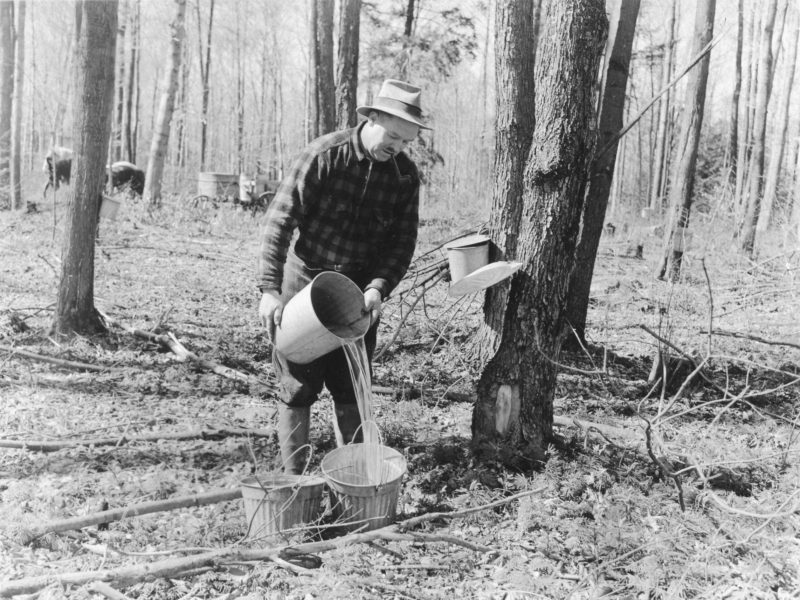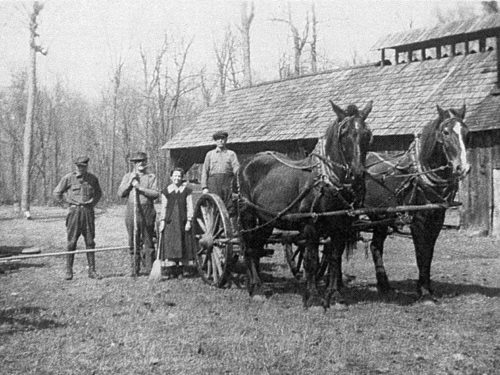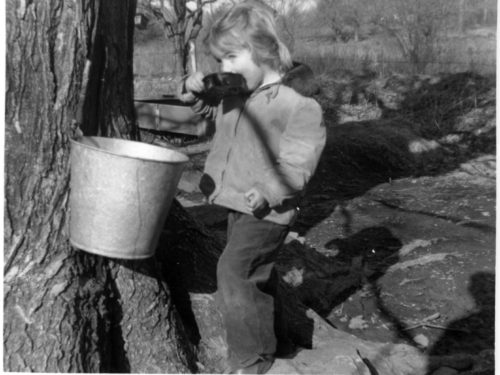Making maple syrup is a long-standing tradition in the Poconos. Early settlers in Greene and Sterling Townships preserved maple groves on their farms for just this purpose—the Akers, Gilpin, Curtis, Grimm, Megargel, Robacker, Stevens, and Uhl families were among the early syrup producers. In the 1800s they would have used spiles made of hollow sumac and collected the sap in wooden buckets. Oxen would have pulled sledges through the snowy woods each day to gather the sap and transport it in wooden barrels to the boiling sites. At first, farmers boiled it in huge cast-iron kettles hung from tripods over open fires; later they shifted to flat pans set over stone fireplaces. In 1880 one-third of the 200 or more local farms reported income from maple products, with John and Amanda (Barnes) Lancaster of South Sterling being the largest producers of maple syrup and maple sugar.
By 1900 metal spiles, buckets and tubs had become standard, and farmers gathered the sap each morning and evening with teams of horses—only about 20 percent of local farms still had working oxen. The sap was taken to the sap house where, during peak season, it was kept boiling round-the-clock by a wood-fueled fire. Sap boils seven degrees above the boiling point of water, with most of it being converted into steam that escaped through the open-sided cupolas in the roofs of the sap houses.
In the 1900s syrup producers ran the gamut from small operations with just a few trees tapped to glean enough syrup for one family’s needs, to entrepreneurs who tapped 1500 or more trees and sold their syrup year-round across the region. In several instances, syrup-making became a family tradition that was passed down from one generation to the next working together on the same land.
The signal for sugaring time to begin is freezing nights and a warm sun that boosts daytime temperatures above 32 degrees. In earlier times these conditions typically occurred in late March or early April; today tapping often begins shortly after Valentine’s Day. Then the sugar bush becomes a scene of intense activity as spiles are driven into trees and buckets hung or, in modern times, tubing run. Sap houses are readied and help lined up, beginning with family members and neighbors who exchange labor for a generous supply of the delicious harvest.
Maple Syrup-Making in the 1900s

























